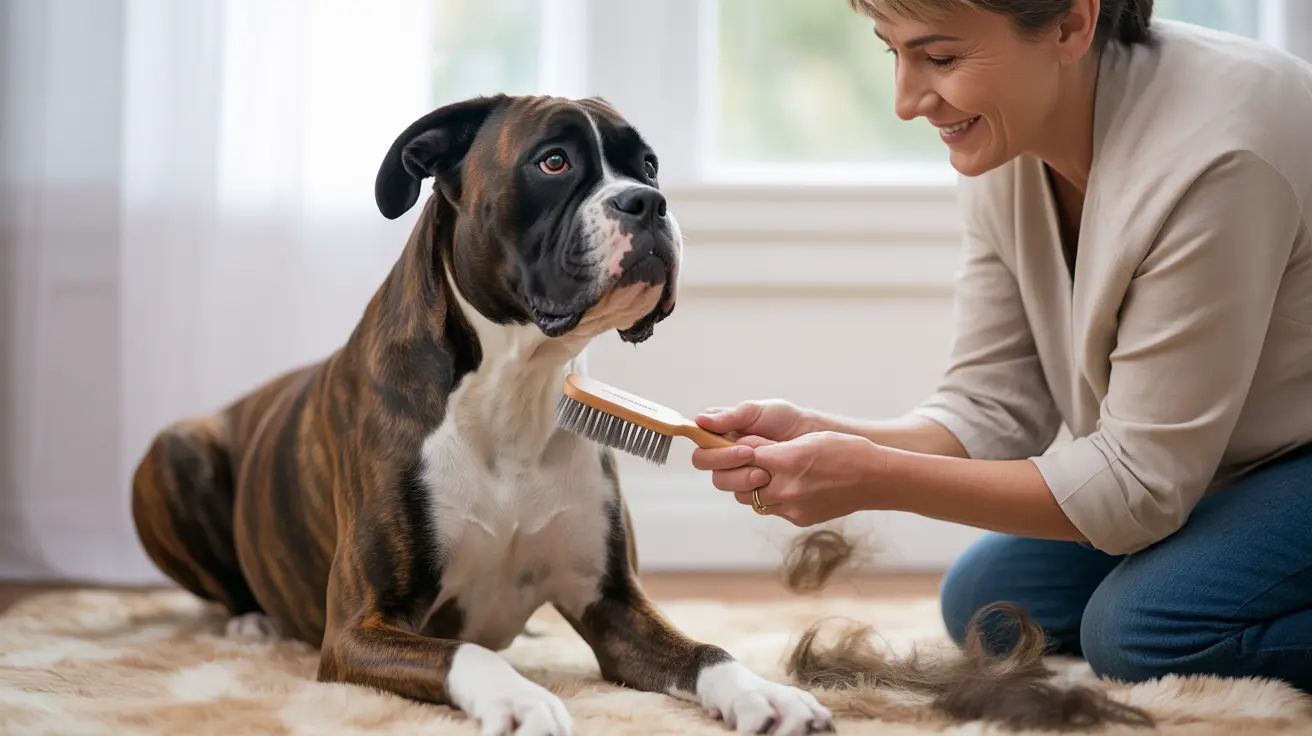Understanding Rhodesian Ridgeback Shedding
Rhodesian Ridgebacks are known for their distinctive appearance and unique coat characteristics. These dignified dogs have a short, dense coat with their famous "ridge" of backward-growing hair along their spine. When it comes to shedding, Rhodesian Ridgebacks are considered moderate shedders, maintaining a relatively consistent year-round hair loss with notable increases during seasonal changes.
For potential owners and current Ridgeback parents, understanding their shedding patterns and maintenance requirements is crucial for proper care. While they don't shed as heavily as double-coated breeds like German Shepherds or Huskies, they do require regular grooming to maintain their coat health and manage loose fur.
Seasonal Shedding Patterns
Like many breeds, Rhodesian Ridgebacks experience seasonal shedding cycles, typically occurring twice a year during spring and fall. During these periods, owners can expect an increase in hair loss as their pet's coat adapts to temperature changes. This natural process helps regulate body temperature and maintain healthy coat growth.
The good news is that their short, wheaten-colored coat makes shedding less noticeable compared to longer-haired breeds. However, the fur can still be visible on furniture, clothing, and floor surfaces, especially during peak shedding seasons.
Managing Your Ridgeback's Coat
Essential Grooming Practices
Regular grooming is key to controlling shedding and maintaining coat health. A weekly brushing routine using appropriate tools like rubber curry brushes or soft-bristled brushes will help remove loose fur before it ends up around your home. During heavy shedding periods, increasing brushing frequency to 2-3 times per week can make a significant difference.
Bathing should be done moderately, typically every 8-12 weeks or when necessary, using dog-specific shampoos. Over-bathing can strip natural oils and lead to skin issues, potentially increasing shedding.
Diet and Health Impact on Shedding
A balanced, nutrient-rich diet plays a crucial role in coat health and shedding control. Foods rich in omega-3 fatty acids, high-quality proteins, and essential vitamins can help maintain a healthy coat and reduce excessive shedding. Any sudden changes in shedding patterns may indicate underlying health issues and should be evaluated by a veterinarian.
Addressing Common Shedding Concerns
While some shedding is normal, excessive hair loss can signal problems such as stress, allergies, or health conditions. Watch for signs like bald patches, skin irritation, or unusually heavy shedding, as these may require veterinary attention. Maintaining a consistent grooming routine and monitoring your dog's overall health will help keep shedding manageable.
Frequently Asked Questions
How much do Rhodesian Ridgebacks shed throughout the year and during shedding seasons?
Rhodesian Ridgebacks shed moderately year-round with increased shedding during spring and fall. While consistent, their shedding is generally manageable with regular grooming and doesn't compare to heavy shedders like German Shepherds.
What grooming routine helps control shedding in Rhodesian Ridgebacks?
A weekly brushing routine using appropriate tools, combined with regular bathing every 8-12 weeks, helps control shedding effectively. During seasonal shedding periods, increase brushing frequency to 2-3 times per week.
Are Rhodesian Ridgebacks considered hypoallergenic or suitable for allergy sufferers?
No, Rhodesian Ridgebacks are not hypoallergenic. While they shed moderately, they still produce dander and can trigger allergic reactions in sensitive individuals.
What are common causes of excessive shedding in Rhodesian Ridgebacks beyond normal seasonal patterns?
Excessive shedding can be caused by stress, poor nutrition, skin conditions, parasites, hormonal imbalances, or underlying health issues. Any unusual shedding patterns should be evaluated by a veterinarian.
How does diet and health affect the shedding and coat condition of Rhodesian Ridgebacks?
A balanced diet rich in essential nutrients, particularly omega-3 fatty acids and quality proteins, significantly impacts coat health and shedding. Poor nutrition or health issues can lead to increased shedding and deteriorating coat condition.
Conclusion
While Rhodesian Ridgebacks do shed, their moderate shedding levels are manageable with proper care and attention. Regular grooming, appropriate nutrition, and monitoring for any unusual changes in shedding patterns will help maintain a healthy coat and minimize loose fur around your home. Understanding their shedding characteristics and implementing proper care routines makes living with a Ridgeback a rewarding experience.






